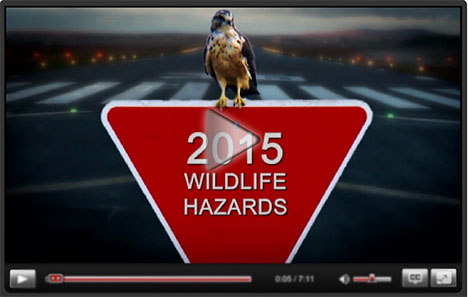July 15, 2015

To increase safety for the aviation community, including business aviation, the FAA has released a new video to encourage reporting of aircraft collisions with birds and other wildlife.
The seven-minute video, titled the “2015 Wildlife Hazard Management and Strike Reporting Update,” explains how strike reporting helps reduce wildlife hazards at airports. The reports inform the FAA and airport sponsors about the types of wildlife involved, the amount of aircraft damage incurred and the number of strikes that occur at airports annually.
The FAA uses the reports to understand national trends and develop wildlife strike mitigation strategies. In addition, strike data enable aircraft and engine manufacturers to design parts that can better withstand wildlife strikes. Furthermore, airport operators use strike data to identify and eliminate nearby habitats that attract wildlife.
More than 150,000 wildlife strikes with civil aircraft have been reported in the United States since 1990, according to the FAA. More than 1,800 airports have reported those strikes, but many other incidents go unreported.
View the FAA’s wildlife strike video.
NBAA has several ongoing efforts to highlight the importance of reporting and to lessen wildlife’s impact on business aviation. The NBAA Safety Committee’s Bird Strike Working Group educates NBAA Members and others about risks to business aviation, and cooperates with other agencies to reduce such risks. The working group hosts a booth about wildlife hazards at several business aviation conferences, and NBAA is represented in two wildlife strike prevention groups: the Bird Strike Committee USA and the World Birdstrike Association.
Gary Cooke, who chairs NBAA’s Bird Strike Working Group and is a captain and safety officer for a Fortune 20 flight department, said that business aviation is often more vulnerable to bird strikes.
“Business aviators often operate high-performance aircraft into and out of many rural and non-certified airports, and many of these airports lack a wildlife hazard management plan that helps to mitigate the risks to aviation,” he said.
Review NBAA’s wildlife strike resources.
Strike reports do not have to be limited to incidents in the United States. Strikes involving U.S.-registered aircraft in foreign airspace can also be reported to the FAA, which will then share the information with its foreign counterparts.


 International Business Aviation Council Ltd.
International Business Aviation Council Ltd.